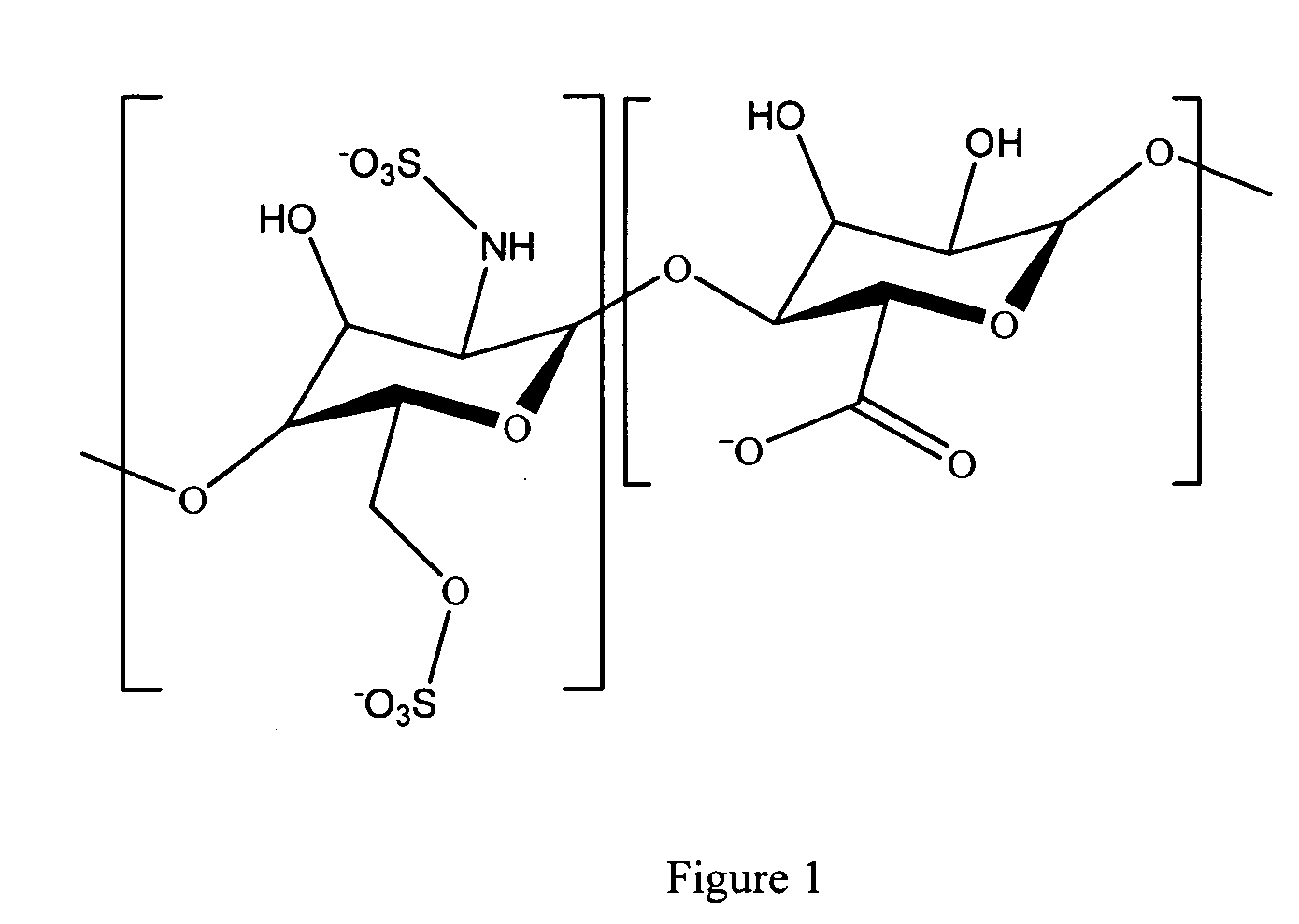Antifouling heparin coatings
a technology of heparin and coating, applied in the field of coating, can solve the problems of reducing the effectiveness of heparin attached thereto, forming a large number of bleeding nests, and limited success
- Summary
- Abstract
- Description
- Claims
- Application Information
AI Technical Summary
Problems solved by technology
Method used
Image
Examples
example 1
Attachment of Heparin to a Methacrylate Copolymer
[0053] 2-Ethoxyethyl methacrylate (10 g) and 2-ethylamino methacrylate hydrochloride (1 g) can be copolymerized by free radical polymerization in a solution of hexadecane and water (0.7 g and 80 g respectively) using tert-butylhydroperoxide (0.1 g) as a catalyst. After the addition of sodium formaldehyde sulfoxylate, the emulsion can be let to react for 60 min. at 60° C. The resulting polymer can be precipitated in cold methanol.
[0054] The methacrylic copolymer (2 g) can be dissolved with heparin aldehyde (0.4 g) in dimethyl formamide (10 wt % solids). Sodium cyanoborohydride can be added to the solution, which can be stirred for 48 h at 40° C. The resulting polymer can be precipitated in water, filtered and dried under vacuum for 48 h.
PUM
| Property | Measurement | Unit |
|---|---|---|
| molecular weight | aaaaa | aaaaa |
| biocompatible | aaaaa | aaaaa |
| hydrophilic | aaaaa | aaaaa |
Abstract
Description
Claims
Application Information
 Login to View More
Login to View More - R&D
- Intellectual Property
- Life Sciences
- Materials
- Tech Scout
- Unparalleled Data Quality
- Higher Quality Content
- 60% Fewer Hallucinations
Browse by: Latest US Patents, China's latest patents, Technical Efficacy Thesaurus, Application Domain, Technology Topic, Popular Technical Reports.
© 2025 PatSnap. All rights reserved.Legal|Privacy policy|Modern Slavery Act Transparency Statement|Sitemap|About US| Contact US: help@patsnap.com



